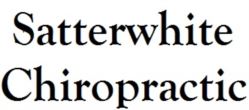Oxford Chiropractic Help for Persistent Pain After Back Surgery
No longer the ‘favored’ term for back pain that hangs around after a back surgery that was supposed to ease it, failed back surgery syndrome has new names like ‘post-surgical continued pain’ and ‘persistent spinal pain syndrome’. Whatever its name, if you have had back surgery and still have back pain, you know how the pain can alter your life, day and night. For many, this means not being able to get a good night’s rest, which can lead to further fatigue and lack of productivity throughout the day. Luckily, there is hope for those who suffer from persistent spinal pain syndrome (PSPS) after back surgery. Recent studies have shown that using chiropractic spinal manipulation and even auricular acupressure can effectively decrease back pain and improve the quality of sleep.
WHAT IS PSPS - Persistent Spinal Pain Syndrome?
PSPS is described as persistent, new, or recurrent low back with or without lower extremity (radicular pain for 10%-40% of patients) pain after at least one or more back surgeries. PSPS is most common in lumbar spine surgery and considered ‘chronic’ at 3-months post-spine surgery because of the speed at which neuropathic pain sets in. (1) Satterwhite Chiropractic has gentle, safe, relieving treatment for post-back-surgery patients.
HOW DOES CHIROPRACTIC SPINAL MANIPULATION HELP?
Satterwhite Chiropractic uses evidence-based, well-researched chiropractic technique, Cox® Technic. A chiropractic study reported on 32 cases of post-surgical continued lumbar spine pain after back surgery who were treated with (Cox®) flexion distraction spinal manipulation and mobilization. Relief was measured by numerical pain scale scores (0/no pain to 10/worst pain) and decreased by 4.1 out of 10 in a mean number of 14 treatments. Patients who experienced back surgeries that combined surgical approaches (like discectomy with fusion or laminectory) reduced even more with 5.7 out of 10. (2) An additional study of 69 cases treated with (Cox®) flexion distraction reported that 81% of patients reacted with greater than 50% relief of pain at the end of the treatment period (mean: 49 days, 11 treatments). At 2-years’ follow-up, 78.6% continued with their pain relief. Mean relief of pain at the end of the treatment period was 71.6% and 70% at two-year follow-up. (3) Listen to this PODCAST with Dr. Byron Folwell on The Back Doctors Podcast with Dr. Michael Johnson as he illustrates The Cox® Technic System of Spinal Pain Management for post-back-surgery-continued back pain patients.
A HELPFUL ADJUNCTIVE APPROACH: WHAT IS AURICULAR ACUPRESSURE?
Satterwhite Chiropractic appreciates effective non-surgical means to elevate the positive relief outcome. Auricular acupressure is such an approach in which pressure is applied to particular points on the ear. It has been used in traditional Chinese medicine for centuries, but lately researchers have started studying its potential as a form of treatment for PSPS patients. A Korean study revealed that auricular acupressure reduced both pain and neurological symptoms related to PSPS. Researchers described it as an effective, safe, cost-effective, non-invasive intervention that may well improve pain, neuropathy, and sleep in PSPS patients. (1) Well, you can’t go wrong with those outcomes! Oxford post back surgery continued pain patients would certainly welcome them. Another study found that auricular acupressure was effective in reducing pain and improving the sleep of older osteoarthritic persons residing in nursing homes. (4) Regardless of age, we all could use better sleep when experiencing pain.
CONTACT Satterwhite Chiropractic
Back pain after back surgery can be frustrating, but it does not have to keep you up all night or bother you as much. If PSPS is your issue and you’re experiencing poor sleep quality due to PSPS, schedule your Oxford chiropractic appointment with Satterwhite Chiropractic soon to explore how chiropractic can help you!
